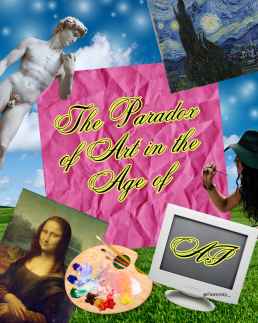The Paradox of Art in the Age of AI
We live in a strange time for creativity.
Everywhere you look, there’s a growing desire for authenticity — for art made by humans, with imperfections, emotion, and intent. People are quick to say they prefer “real” art over AI-generated work. Yet, quietly, many of those same people are turning to AI tools because they’re faster, cheaper, and endlessly convenient.
It’s a contradiction that cuts deep for artists.
Everyone Wants Real Art — Until It Comes with a Price Tag
There’s no shortage of posts online declaring, “Support human artists!” or “AI art will never replace real creativity.” And it’s true — people are drawn to human expression. There’s something magnetic about seeing the world through someone else’s perspective, about knowing that a piece of work was shaped by thought, feeling, and lived experience.
But when budgets are tight, deadlines are short, or curiosity takes over, the temptation to type a few words into an AI generator and watch an image appear instantly can be too strong to resist.
It’s quick. It’s cheap. It’s “good enough.”
And that’s where the frustration begins. Artists aren’t just competing with each other anymore — they’re competing with algorithms.
The Quiet Cost of Convenience
AI art doesn’t appear from nowhere. These tools are trained on vast datasets filled with images made by real artists, often scraped from the internet without consent or credit. Their creative labour becomes invisible — absorbed into a machine that now produces infinite variations of their work.
So while AI might seem like a harmless creative shortcut, it quietly relies on the very human talent it threatens to replace.
For many artists, this feels like theft dressed up as innovation.
Why Human Art Still Matters
Despite the flood of AI content online, there’s something irreplaceable about human art.
You can sense when something’s been felt instead of generated.
Human art carries story, emotion, and intention. It reflects our flaws and contradictions — the very things that make us human in the first place.
A painting might not be “perfect,” but it holds a heartbeat.
A design might take longer to create, but it carries meaning that no machine can replicate.
In a digital world that’s becoming increasingly synthetic, people are starting to crave the real again — real people, real stories, real art.
Artists Deserve More Than Applause
But appreciation can’t stop at admiration.
If we want to keep human creativity alive, it has to be valued — in time, in credit, and in payment. Sharing a post that says “support artists” means nothing if we don’t actually do it.
The irony is that while AI art seems limitless, it’s the human touch that gives art its soul. And if we stop valuing that, we risk losing the very thing that makes art powerful — the connection between creator and viewer.
Reclaiming Creativity
AI can assist, inspire, and even open new creative doors — but it shouldn’t replace the artist behind the idea.
Now more than ever, supporting human creativity is an act of rebellion. It’s choosing emotion over efficiency. It’s choosing to see art not as a product, but as a piece of someone’s story.
Because no matter how advanced AI becomes, it will always be imitating something that only humans can truly create: meaning.
In an age of automation, choosing human art isn’t nostalgia — it’s preservation.

